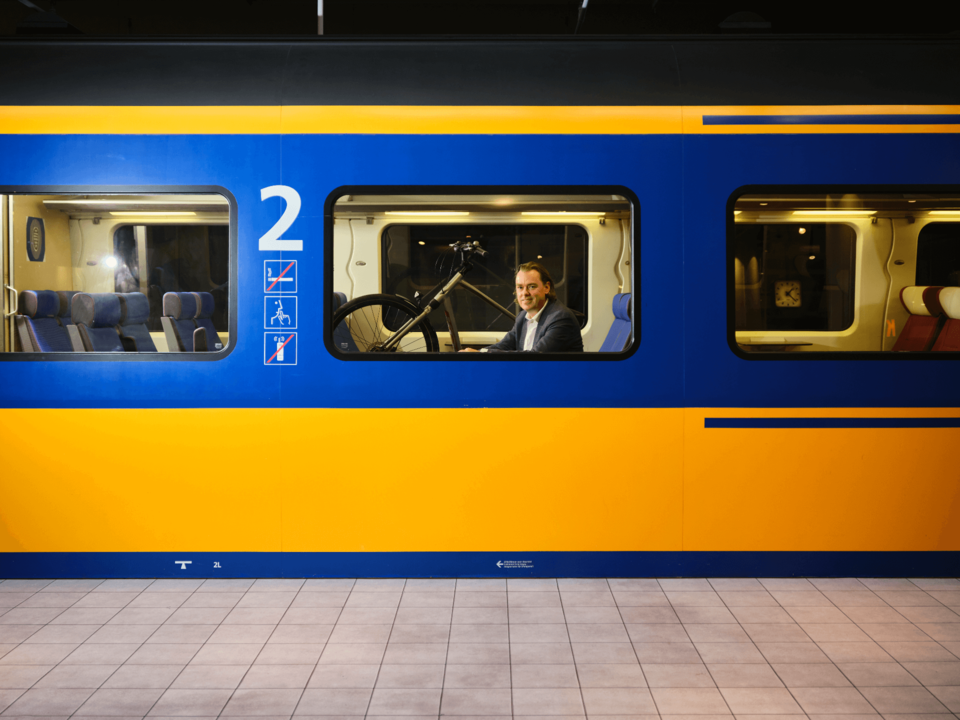You can use ultraviolet light from LEDs to combat coronavirus. But it’s not as simple as commercial providers are presenting it right now, concludes Professor Guoqi Zhang. On the need for a sound scientific basis and the potential for LEDs in medical applications.
We know that UVC light can kill viruses and bacteria effectively and quickly. So it was only logical that at the beginning of the coronavirus outbreak, thoughts quickly turned to the use of UVC (ultraviolet light with a wavelength between 100 and 280 nanometres, which just like UVB and UVA is invisible to the human eye). Maybe it would be possible to use UVC as a coronavirus decontaminant on surfaces and even to disinfect air. Meanwhile, there are many commercial parties offering products that claim to do just this.
But unfortunately it’s not as simple as that, explains Professor Guoqi Zhang of the Faculty of EEMCS. Zhang is an expert in medical applications for light, and started focusing on this method of disinfection right at the beginning of the Covid-19 pandemic.
LEDs
‘Before we talk about combating coronavirus, I want to say something about LEDs’, says Zhang. ‘Because they are crucial. We already knew that UVC light works as a disinfectant, but its use in other light sources than LEDs is relatively bulky, inconvenient to use, and other light bulbs contain hazardous substances. So LED technology is the only solution.’
‘I need to make it clear that the development of UVC LED lighting was not done by us. We at Delft have contributed to it, but the technology was developed in recent years by science and the industry. LED technology really took off around fifteen years ago.’
Before coming to TU Delft, I spent years working at Philips, where I saw the commercialisation of LED lighting at close hand. Back then, everyone in the industry was working on LEDs to replace conventional light bulbs, so for general lighting, but I saw right away that there was more potential. You can also use LEDs in agriculture, for instance, or in data communication, but here I’m talking about wavelengths above 480 nanometres. In the higher frequencies you enter UV territory, and this is where LEDs can be used for medical applications.’
‘However, the focus in industry at the beginning was mainly on visible light; the industrialisation of UVC LEDs only really got under way in the last five years.’
Covid-19
So back to UVC and Covid-19. You don’t have to look far these days to find huge numbers of commercial UVC products which are claimed to kill the virus. Zhang is sceptical about these. ‘At the beginning of the year, when I saw that we needed to do more with this, no-one could demonstrate scientifically whether and how UVC could kill this virus. Above all, it’s important to work out precisely what “recipe” you need. Here I’m talking about things like the optimum distance between the light source and the virus, or what capacity you need. What light intensity do you need, what is the relation to ozone production? What role does temperature play, how long do you need to irradiate the surface, thirty seconds or two minutes? And what percentage of virus are you actually killing? Then you need to know the optimum wavelength. Is that 260 nanometres, or maybe 280?’
At the beginning of the year, no-one could demonstrate scientifically whether and how UVC could kill this virus
‘These were all scientific questions that no-one had the answer to. So we were the first people to look for answers, together with the department of Professor Ron Fouchier, virologist at Erasmus MC in Rotterdam. We had two goals. The first was to create a test platform for systematic virology research. The second was to use this tool to find the optimum recipe for killing the virus using UVC. Once we know that, we can tell the industry exactly what they need to develop to get the maximum effect.’
Early
‘I am very happy with the collaboration with Erasmus MC. As Head of Department, Ron is extremely busy, but he always made time for us. We were already working on this before coronavirus really hit the Netherlands. I come from China and returned from a business trip there in mid-January. Shortly after, you saw the virus growing exponentially in China. I immediately sent an email to the TU Delft management. We needed to take extra care because it was nearly Chinese New Year, a time when many students and staff were likely to travel from Delft to China. So we needed to take measures to protect our people.’
‘But at the same time, I thought: we can also do research and put our knowledge of LED technology to good use. Right away Ron said: come over and we’ll talk. So it began really bottom-up, but soon after, our research was given financial support from the TU Delft COVID-19 Response Fund. It wasn’t a huge sum, but it was a great help and an official procedure would have taken far too long.’
Day and night
‘We asked three Master’s students and a doctoral candidate if they were interested, and they agreed immediately. They worked day and night on the project. We have now shown that our test set-up works, but one problem is that we are not allowed to work freely with the coronavirus for safety reasons. So Fouchier suggested that we start by testing influenza viruses because we expect them to be very similar to coronavirus. If the test platform works for influenza, it should also work for coronavirus. We will come with the final version of our scientific set-up in the first quarter of 2021 and hope to start tests using the real virus as soon as possible.’
‘And we’re not only doing experimental research; a doctoral candidate is also carrying out simulations, and a graduate will be continuing the project to further professionalise the test platform. Maybe, in the long term the platform could be a commercial operation as well.’
Broader than coronavirus
Zhang is convinced that coronavirus is not the only medical issue that can be dealt with using light. For example, he is involved in a European project that uses LCEs (liquid crystalline elastomers) to stimulate cardiac contraction. And there is a collaboration with LUMC in the field of optogenetics.
‘Cardiac fibrillation is a major problem. The idea with Leiden is to inject cardiac muscle tissue with a virus that makes it sensitive to light. Normally, you regulate a diseased heart using a pacemaker that delivers electric shocks, but by making the heart tissue light-sensitive you could use pulses of light instead. We could develop an implantable device for this which would be far more pleasant for the patient.’
‘This is a fascinating project, but we are only just beginning. We have already published about it in academic journals, but it will be a considerable time before we are ready to really use it in the field.’
‘Many of these medical applications are coming within reach through the development of LED technology, as it enables us to create extremely small light sources and devices. We are working to create micro-LEDS smaller than 10 micrometres; a human hair is 80 micrometres thick!’
















